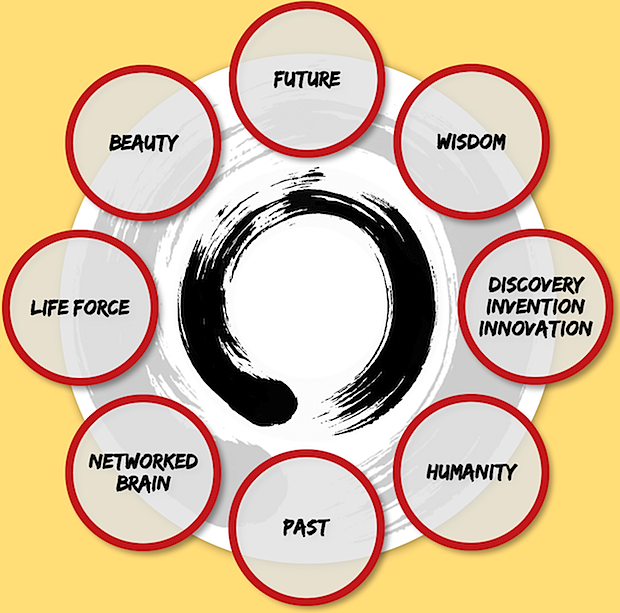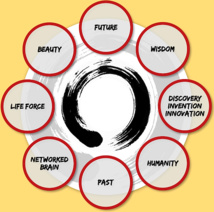Thestrategist.media – 13 April 2015 – The Huffington Post reports about green technologies that are being agents of innovative empowerment of local communities. The said post is written by Woodrow W. Clark ll, who is the M.D. of “Clark Strategic Partners” in collaborations with the chairman of “Alliances for Discovery”, Julian Gresser and the C.E.O. of Global Investments, LLC, Francisco Acuna.
The 21st century has been witnessing the benefits of green technologies which are transforming life in every respect. Japan and the United States of America, who are ‘partners in prosperity’, documented historical evidences wherein the combination of economical “strategic” technology along with industrial supports accelerated the innovative and economic growth. Consequently, more jobs were created which raised productivity.
Japanese market saw the same trend with the market launch of robotics, semiconductors, household electronics, computers and automobiles. Moreover, the “Green Industrial Revolution” is a testimony to the fact that when “green innovations and technologies” are combined which stem from the environment and energy sectors, it creates “social capital” pushing all social aspects towards betterment.
There is a misconception about green innovations as they are often taken for granted “as a matter of systems integration implemented by experts on a technical level”. The “agile energy system” could prove to be one such example which caters to multiple aspects like power production, allocation and storage system which also combines the transmission of renewable energy from the central grid to communal power supplies.
The Huffington Post writes:
The 21st century has been witnessing the benefits of green technologies which are transforming life in every respect. Japan and the United States of America, who are ‘partners in prosperity’, documented historical evidences wherein the combination of economical “strategic” technology along with industrial supports accelerated the innovative and economic growth. Consequently, more jobs were created which raised productivity.
Japanese market saw the same trend with the market launch of robotics, semiconductors, household electronics, computers and automobiles. Moreover, the “Green Industrial Revolution” is a testimony to the fact that when “green innovations and technologies” are combined which stem from the environment and energy sectors, it creates “social capital” pushing all social aspects towards betterment.
There is a misconception about green innovations as they are often taken for granted “as a matter of systems integration implemented by experts on a technical level”. The “agile energy system” could prove to be one such example which caters to multiple aspects like power production, allocation and storage system which also combines the transmission of renewable energy from the central grid to communal power supplies.
The Huffington Post writes:
“Such agile systems are often linked with transportation infrastructure networks based largely on sustainable fuels. But technical solutions, no matter how innovative will not ensure local community engagement, support, and adoption.”
Furthermore, according to the authors of “A Smart Green Explorers Wheel: Empowering Innovative Local Communities”, the concept of “sustainability” is gaining a new expanded meaning which:
“...explicitly includes human wellbeing, eco-services of natural assets, resilience of material systems, integrity of institutions, and community knowledge.”
In fact, the concept of “capital” is also undergoing a change by substituting the old perceptions of “energy and materials utilization” with a holistic definition that would fit equally for a developing as well as for an advanced country. The challenge to achieve this feat remains with the solution “to engage local communities” in the creative designing and practical implementation of “smart” green systems.
Interestingly, Mexico is proving to be a successful platform in the green technologies as the country seems to have natural resources like wind, biofeul, geothermal, wave energy and solar powers which are yet to be explored. In fact, for quite some years in the recent past, the InTrust and Global Health and the Environment centre of Harvard have formed a consortium which incorporates three hundred professors from hundred twenty different universities. These professors are involved in educating the “young entrepreneurs” so that they work collectively in hundred “high priority projects” in collaboration with the ministry of energy in Mexico. It is an attempt to include as many locals as possible, some as owners while others as workers in the “green” projects.
However, the challenge lies in capturing the benefits from the green technologies and at the same time recovering financial rewards for business corporations by giving out legally recognised innovations like patent pools or mega-patents. In fact, ensuring a transfer of creative incentives for Mexico’s smart green technologies to be internationally recognised, which can replace “old colonial model” of foreign patronages of “natural resources” local ones, is equally important.
Woodrow Clark, along with his co-writes, write that in the above mentioned task, the "Smart Green Explorers Wheel” can assist Mexico to meet afore mentioned challenges. The Huffington Post introduces the Wheel as:
“... a new way of connecting diverse domains of knowledge and people that are currently fragmented in vertical silos as a result of increasing professional specialization. The process begins by the explorers posing a central innovation challenge at the hub which they then investigate from eight perspectives: the Past, Wisdom, Beauty, Life Force, Innovation, Humanity, the Networked Brain, and the Future. This way of exploring trains the mind to perceive the world differently and to discover its deeper patterns.”
The meeting point of all the eight realms reflects a conventional field of “intertidal connections” which has often been the stemming root of important “breakthroughs”. If this Wheel is “designed as an online intelligent aide” which will link places, resources and people for high priority projects through a “Visual Matching Engine”, providing feedbacks and suggestions, the “core innovation challenges” can then be solved on a collective cloud-based platform.
Other feature of the Explorer Wheel involves a “venue” to each user to share his stories of victories, defeats, struggles and dreams, which can help in building momentum and collective support to design a project. Moreover, the "visionary community narrative" can also “attract foreign sources of capital” or can even motivate other talented people with new ideas and technologies, either within or outside the country, to join into the green venture.
The Huffington Post concludes:
“By engaging people around purposeful, vitalizing, and compassionate activities a Smart Green Explorers Wheel may provide one essential resource in a world that is increasingly isolated, lonely, suspicious, and despairing of viable alternatives.”



















